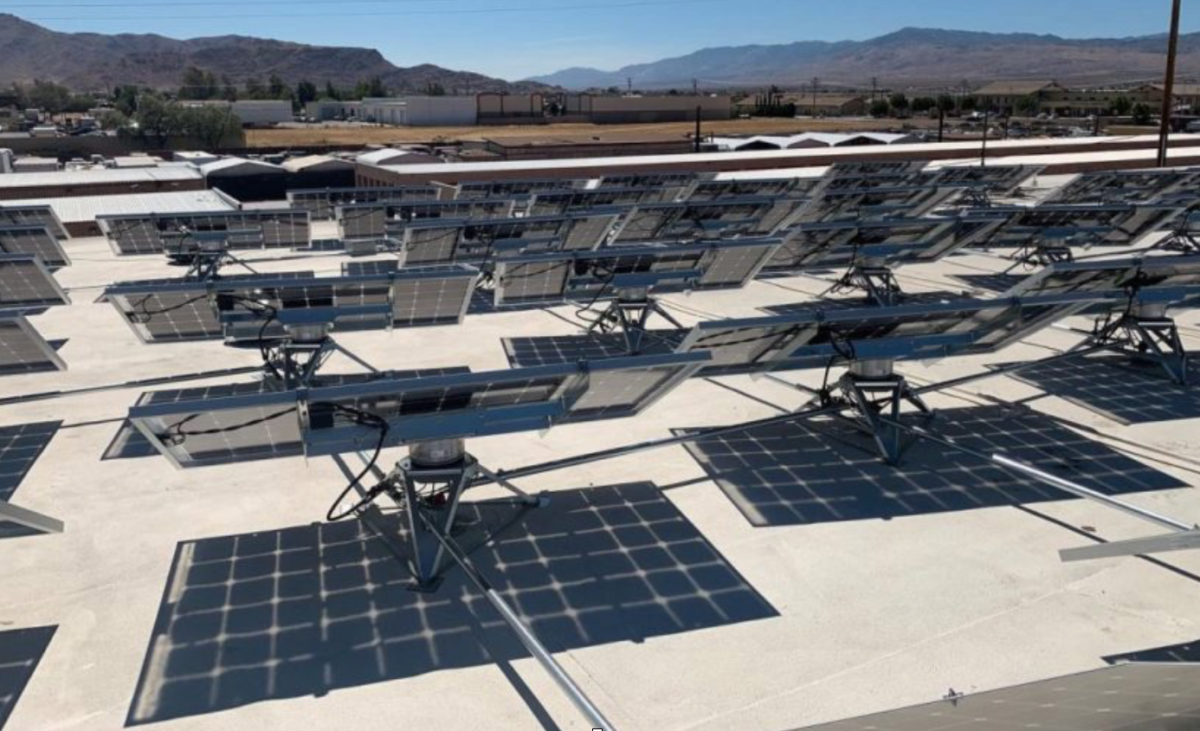From pv magazine USA
Solar modules and, to a lesser extent, inverters, get a lot of public and press attention – modules can’t be blamed for being the most visible, shiny element of a solar installation.
But the hard-working racking and tracking below the PV panels is just as critical as the more active components, even though the cost of racking represents just a small portion of a total rooftop installation. According to the National Renewable Energy Laboratory’s most recent solar cost benchmarks, residential solar racking costs approximately $0.10/W and commercial solar racking costs $0.10/W to $0.22/W, depending on wind and snow-loading measures.
Nevertheless, the racking market segment is innovating and still attempting to drive cost out of its modest slice of the solar cost pie.
Market taxonomy
Confining the scope of this article to residential and commercial racking – and leaving trackers, ground mount and carports aside for now – it’s clear that solar racking systems are not all created the same. While most racking systems contain flashing, mounts or feet, aluminum rails, clamps, and ballast for non-penetrating commercial installations – there is still a spectacularly wide range of innovative racking approaches, all with their own strengths and weaknesses.
The vendor landscape is fragmented as is the application space – divided into rail-based and rail-less systems for residential roofs. Each roof type – composite shingle, standing seam metal, tile roofs, and low-slope ballasted applications requires its own specialized racking approach.
This has resulted in a crowded market with a long tail of small racking companies. This fragmented racking market has long been ripe for consolidation – and over the last months and years that consolidation has been driven by private equity firms.
Quick Mount was acquired by Netherlands-based Esdec last year in a rollup of U.S. racking companies. Esdec also acquired racking companies IronRidge and EcoFasten at undisclosed prices to gain a reported 60% share of the nation’s residential racking market.
Business for Quick Mount seems to be going well. According to equities analyst Roth Capital Partners, Quick Mount’s revenue is growing 70% year over year. Last year, the company doubled its annual production capacity to 1.2 GW.
Private equity firm Tenex acquired Unirac in 2016 as a corporate platform with the goal of adding other solar companies. Unirac continued the market consolidation despite the pandemic and acquired Ecolibrium Solar in July, adding Ecolibrium’s commercial flat roof, residential rail-less and metal roof products to its product line. Ecolibrium has installed more than 800 MW of its racking gear.
The consolidation in the racking market shows no signs of slowing down and the market segment has become a little hotbed of M&A.
Popular content
Racking innovation
Flat or low-slope commercial roof customers are best served with non-penetrating, ballasted mounting systems – and these come in a variety of innovative form factors.
A good example of the innovation happening in the commercial racking market is the BX system from IronRidge. IronRidge’s “flat roof attachment anchors” can be fully ballasted, fully anchored, or a hybrid optimized for the site. The system can eliminate hundreds of pounds of required ballast weight and achieve configurations as light as three pounds per square foot, according to the company.

Another innovative startup, Point Load Power, has launched PV Booster, a tracking system designed for commercial applications. It’s this undefended hill of small-scale project tracking that Point Load Power CEO Peter Ciulla sees as the path to success.
“The first-generation PV Booster tracker was conceptualized by Bill Gross at the Idealab incubator back in 2016,” Ciulla told pv magazine. “The goal there was to take those economic benefits of tracking that had been proven year after year in utility-scale PV projects and bring them to the growing C&I market.”
Using a steel frame and low-profile design, the product has achieved UL 3703 certification, as well as the wind loading requirements of ASCE 7-16, achievements that Ciulla asserts the company spent all of 2019 working toward.

“Weight and wind. The way we solve those is keeping things short and keeping it as small and as low to the roof deck as possible,” said Ciulla. “These small, short trackers end up keeping those wind loads as low as possible, which keeps the weight as low as possible and ultimately transfers lower loads onto the building structure.”
Residential racking
The California residential solar mandate has become a driver of innovation in residential solar racking and mounting. Home solar installer Sunrun and its homebuilder partners are starting to deploy PV modules at the time of construction. Attachments for the racking are installed below the roof shingles, directly to the plywood making up the roof. This will lower installation time, costs, and the risk of roof leaks.

In the same vein, U.K.-based manufacturer Viridian is trying to get UL approved for the U.S. market for its product, which gets rid of racking altogether and connects directly to the structure underneath the base plywood. Viridian has signed a distribution agreement with Unirac.
It’s evident that the technological innovation and market volatility in the U.S. racking market is going to accelerate as competition continues, as the California solar mandate advances, and as solar spreads to more residential and commercial rooftops.
This content is protected by copyright and may not be reused. If you want to cooperate with us and would like to reuse some of our content, please contact: editors@pv-magazine.com.




2 comments
By submitting this form you agree to pv magazine using your data for the purposes of publishing your comment.
Your personal data will only be disclosed or otherwise transmitted to third parties for the purposes of spam filtering or if this is necessary for technical maintenance of the website. Any other transfer to third parties will not take place unless this is justified on the basis of applicable data protection regulations or if pv magazine is legally obliged to do so.
You may revoke this consent at any time with effect for the future, in which case your personal data will be deleted immediately. Otherwise, your data will be deleted if pv magazine has processed your request or the purpose of data storage is fulfilled.
Further information on data privacy can be found in our Data Protection Policy.